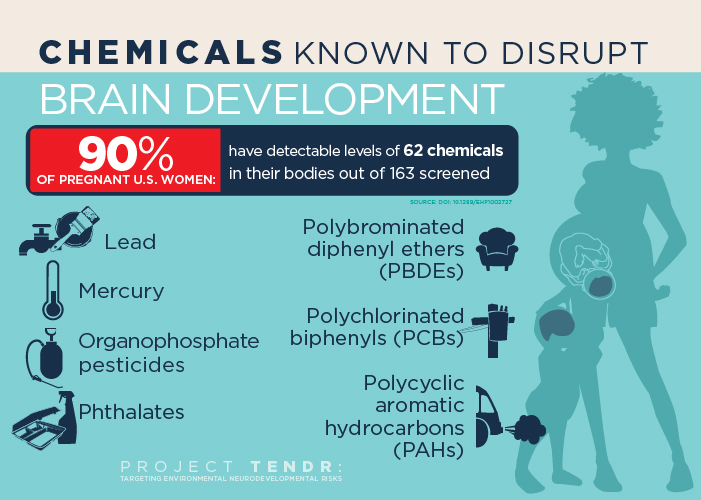- Lead and mercury
- Organophosphate pesticides used in agriculture and home gardens
- Phthalates, used in pharmaceuticals, plastics, and personal care products
- Flame retardants known as polybrominated diphenyl ethers
- Air pollutants produced by the combustion of wood and fossil fuels
- Cosmetics and food containers
- And polychlorinated biphenyls, once used as coolants and lubricants in transformers and other electrical equipment (PCBs were banned in the U.S. in 1977, but can persist in the environment for decades)
University of Illinois comparative biosciences professor, Susan Schantz said, “These chemicals are pervasive, not only in air and water, but in everyday consumer products that we use on our bodies and in our homes. Reducing exposures to toxic chemicals can be done, and is urgently needed to protect today’s and tomorrow’s children,” reports the Illinois News Bureau.
From the article:
“The human brain develops over a very long period of time, starting in gestation and continuing during childhood and even into early adulthood,” Schantz said. “But the biggest amount of growth occurs during prenatal development. The neurons are forming and migrating and maturing and differentiating. And if you disrupt this process, you’re likely to have permanent effects.
Thyroid hormone is involved in almost every aspect of brain development, from formation of the neurons to cell division, to the proper migration of cells and myelination of the axons after the cells are differentiated,” said Schantz. “It regulates many of the genes involved in nervous system development.”
The truth is that most chemicals have never been studied to see what they do to neurodevelopment. Or the hormonal system. And yet they are everywhere and we are constantly exposed to them. In fact, phthalates and PBDEs, are known to interfere with normal hormone activity and most pregnant women in the U.S. will test positive for exposure to phthalates and PBDEs, both of which disrupt thyroid hormone function (phthalates also interfere with steroid hormone activity). There are also studies which link exposure to certain phthalates with attention deficits, lower IQ, and conduct disorders in children.
We’ve got to do something.
Thank you to Schantz and her colleagues who are doing this research and parallel studies in older children and animals, as the primary focus of the Children’s Environmental Health Research Center at Illinois. And thank you for having the guts to criticize the current regulations which are allowing chemicals to be introduced into people’s lives with little or no review of their effects on fetal and child health. Good luck and godspeed.












